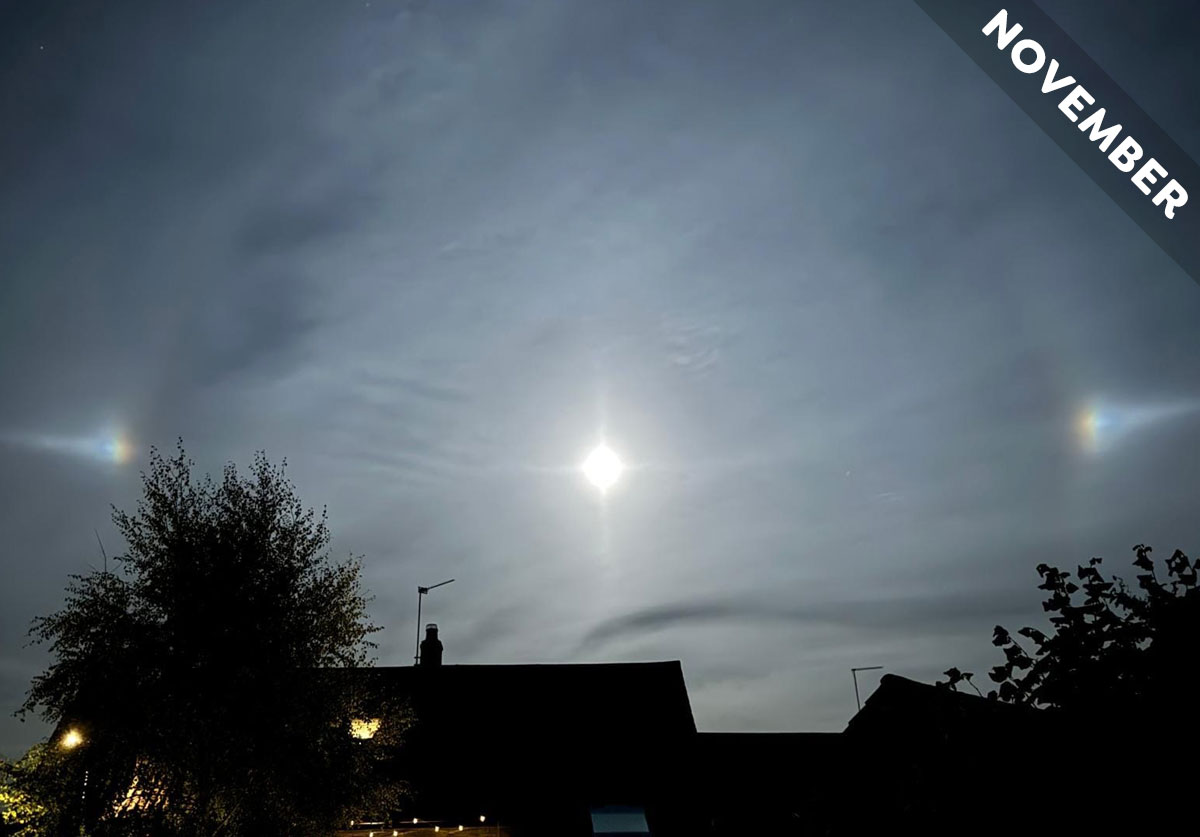Paraselenae – The Moon’s Best Friend
These streaks of light spotted at night over Chippenham, Wiltshire, England by Stephen Quinton (Member 13,183) are caused by the moonlight shining through ice crystals in a Cirrostratus cloud. You might have seen similar bright patches appearing in the daytime, level with the Sun. The daytime versions, known as parhelia, or sun dogs, are quite common optical effects. It is rare, however, for these halo phenomena to form by the light of the Moon like this, when they are known as paraselenae, or moon dogs.
Named from the Greek para, meaning ‘beside’, and selēnē, meaning ‘moon’, paraselenae form in the same way as their solar siblings: through the refraction, or bending, of light by the ice crystals in clouds. The crystals have to be shaped and oriented just right for the optics to work. They have to be in the shape of tiny hexagonal platelets and have their faces aligned almost horizontally as they fall through the sky like autumn leaves.
And the Moon needs to be bright for its light to be strong enough for us to see the moon dogs. It was a full Moon when Stephen spotted these moon dogs, showing that the Sun is not the only celestial body to have loyal companions at its side.
Paraselenae, or moon dogs, in Cirrostratus spotted over Chippenham, Wiltshire, England by Stephen Quinton (Member 13,183). View this in the photo gallery.



